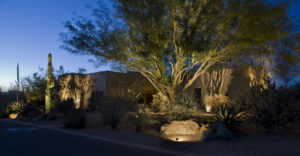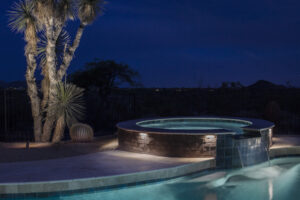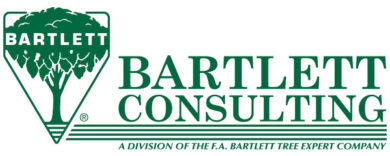Why Light?
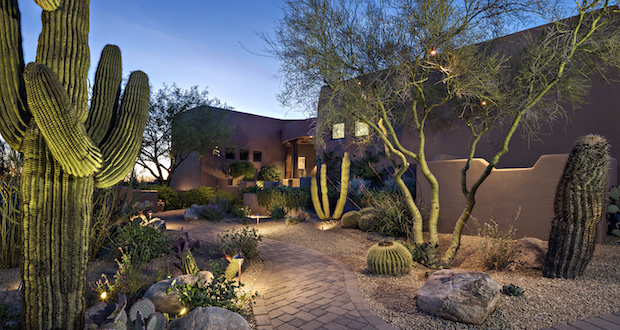
Answering this, and other questions, is essential when designing with light.
Bill Locklin, the inventor of 12v landscape lighting, used to deliver seminars on his craft. During the design portion of his seminar, his instructions were to always ask ourselves “Why light?” when visiting a potential client.
Why light? Why did the client call me here? What are we trying to accomplish? In most cases, the potential client has no specifics on what they are looking for in a lighting system. I am sure you’ve heard it many times, “I do not want my property to look like Disneyland” or “like an airport runway!”
One of the biggest mistakes a contractor can make is to just drop off a lighting manufacturer’s catalog and advise the client to “pick out what you like and I’ll install it.” We’ve all done it, but clients need our guidance. In our eagerness to make the sale, we forget to ask, “Why light?” While the fixture install may go smoothly, the result is not always acceptable to the client – because we forgot to ask what they were looking to accomplish.
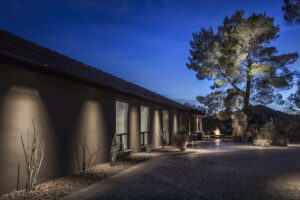 Our advice to you: carry a notepad and pencils, ask “Why light?” and keep the client talking until you have a clear understanding of their lifestyle and how they plan to use outdoor spaces once they are professionally illuminated.
Our advice to you: carry a notepad and pencils, ask “Why light?” and keep the client talking until you have a clear understanding of their lifestyle and how they plan to use outdoor spaces once they are professionally illuminated.
Is the client looking for lighting to beautify an area? Are they looking for safety and security? Are the spaces public or private? Are there special lighting needs for this client? These questions (and others) are all important to ask before a true lighting system is to be designed and installed.
When designing with light, discover your customer’s needs at the start — this effort will ensure a smooth project. Identify design objectives early on during a design consult. For example, if the customer mentions they like to entertain a lot, that statement might be a hint to use a dramatic approach, rather than a “safety and security” approach.
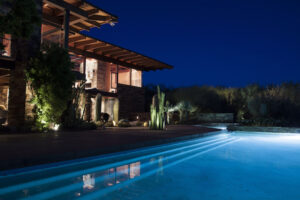 Ask the customer some lifestyle questions, such as:
Ask the customer some lifestyle questions, such as:
- Where do they spend the most amount of time?
- How do they use their outside areas?
Public spaces such as front yards may need more dramatic illumination to show off the architecture. Backyards are typically more private areas, and the client may ask for a calmer and warmer effect. Lighting can create the mood or destroy it.
Your client will tell you how they feel about light if you ask them. This will set you apart from the “10 light set” installers. With your skill, you should have no trouble designing a lighting system if you are asking the right questions.
The following are additional tips for designing with light.
Language
One challenge in describing lighting is the language we use. When talking with fellow lighting designers, it’s great to use technical terms – but it’s easy to lose your customer with this language. Understanding your audience is extremely important. Sharing your design concepts with customers in a non-technical way will pay off in the long run.
Knowing the viewing angle of the object that you are lighting is crucial. There are installations where a fixture was installed “per plan”, but the fixture is on the wrong side of a block wall – and the light effect was not viewable from the customer’s patio. It’s also helpful to observe an object you want to light from multiple angles; move around the area (indoors and/or outdoors) with the customer.
Tactics for small areas
If the proposed area proposed to light is quite small, it might feel even more cramped if you only light architecture and plants within that area. A method used to make small spaces feel bigger is to capture objects that are farther away, but still in view. This strategy will help draw your eye out to a focal point rather than the immediate space. This same concept can be used to light focal points in a landscape that are far away.
Layering
Layering light within a landscape lighting plan creates a dramatic look. Achieve this effect by using different lighting methods, such as uplighting, downlighting, backlighting, and path lighting.
Build hardscape features to accept the lighting you plan to install. For example, use a large capstone for a knee wall to help disguise the light source. Or install an LED light strip underneath the ledge of an outdoor kitchen just by planning and having a slightly larger overhang. The options are endless when designing the hardscape around a lighting plan.
Designing with beam angles
Just as a sprinkler system has nozzles with different spray patterns and precipitation rates, a good lighting system uses projection lamps in many wattages and with different beam angles.
Beam angles in projection lamps are normally available in three styles: 15-degree, 30- degree, and 60-degree. Some manufacturers now offer the option of 100-degree and 120-degree lamps.
Thinner objects such as pillars, some statuary, and topiary trees may need a tight 15-degree beam angle or optic. This beam angle may also be used in some contemporary applications to create light beam sculpture on walls. Flagpoles and tall trees may need a 30-degree lamp or optic depending on the height. The beam spread of the lamp will widen and soften as it rises. Wider trees and walls may need a 60-degree lamp or optic.
Contractors often use the 60-degree lamp to achieve a dramatic “V” pattern on a wall. Wider beam angles such as a 100-degree or 120-degree can be used as a wall washer to create backlighting effects. Since these wider beam angles were introduced, contractors can now use a simple adjustable uplight for many applications.
Managing shadows
In exterior lighting, shadows can be a good thing when accenting plants onto a wall or side of a building. This effect adds texture and depth to a design. Another example of good exterior shadows would be downlighting a tree. The goal of downlighting is to emulate what the sun does during the day. Recreating this look at night can add stunning beauty to an area. The lights mounted up in the tree will cast light through the lower branches, creating small shadows on the ground. These are good shadows – when the wind blows, these shadows dance on the ground.
For additional lighting design expertise and product guidance, consult with your lighting manufacturer of choice.
And remember, when designing with light, always start by asking “Why light?”
Article provided by Brilliance LED, a manufacturer of high-performance landscape retrofit lamps serving both commercial and residential markets, and a leader in the LED and Green Industry. For more information and design tips, visit brillianceled.com.

